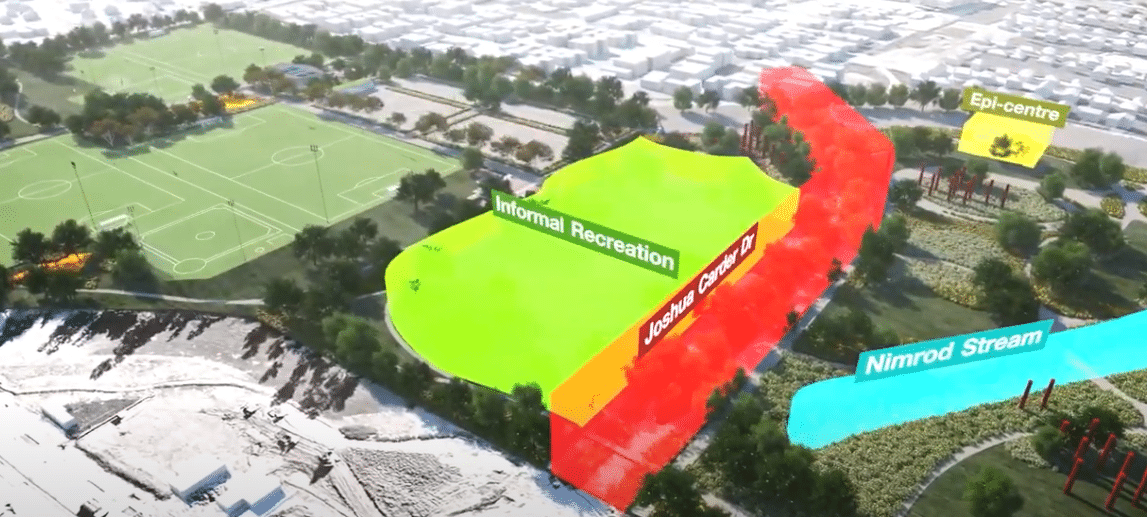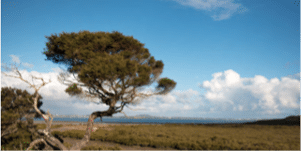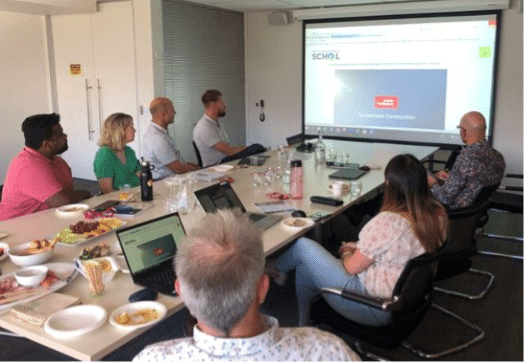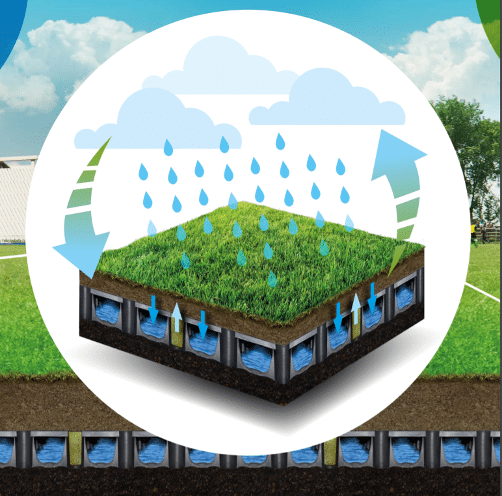Te Kori Scott Point is a 16.4ha area of land in the northwest of Auckland that is about to be transformed from a rural landscape to a public park to meet the needs of a new community.
Development of this park is no ordinary feat. Te Kori Scott Point is set to become the first fully sustainable park in New Zealand. Auckland Council is embarking on this project as a flagship for the future sustainable provision of parks. It will help steer the future course of design, development, management and governance of parks across Auckland in a way that responds to the urgent needs of our planet for sustainable custodianship.
Auckland Council’s Service Principles have informed the development of the master plan. These include: Resource sustainability; Community equity and belonging; Re-wilding; Team and co-design; and Standards and outcomes.
The park will comprise three main areas: an area for sports and active recreation, an informal recreation area, and an area of ecological restoration and conservation. Each is defined by the geography of the site. Natural landforms are retained and earthworks minimised.
The process of imagining and projecting a flagship sustainable park has involved extensive engagement with mana whenua, key stakeholders and specialists.
Rating Highlights:
The Project achieved five innovation points across ecology, education and innovative technology.
Ecology Enhancement - Eco-1 credit benchmark exceeded – 1 innovation point
The SPSSP project increases the site ecological value by 29% through the following design features:
- Re-vegetating the existing contaminated / hard infrastructure nursey area,
- Replace 18,9123 m2 of exotic planting with 22,134 m2 native vegetation,
- Reducing the area of grassland / non-improved pastures by 7% a total of 4,830 m2
These features have been implemented by developing a Native planting plan eco-sourced from the area, designing different planting zones with complimentary species, supporting population growth of critically endangered plant Epilobium hirtigerum, increasing connectivity and forest spaces, and planning for on-going management of the planting and fauna.
This is a large increase in ecological value and is above and beyond the Level 3 requirement of 20%. Therefore 1 innovation credit was awarded.
Innovation Challenge Number 6 - Supply Chain Education – 1 innovation point
85% of the Project Team undertook Supply Chain Sustainability School eLearning modules. Two key modules (Climate Change Adaptation and Sustainable Construction) were delivered by group learning sessions, and the rest of the training was through self-paced online modules.
Blue2Green Innovative Technology – NZ First – 3 innovation points
Jacobs and Sporteng have designed Field 1 to utilise Blue2Green for stabilisation of the base and irrigation. The specified Blue2Green system provides storage of 1080m3 and will capture rainwater and reuse 100% of its water onsite.
Blue2Green is a system of crates that are made from recycled plastic that stack together. They sit underneath the performance layers of the field and collect rainwater that falls onto the field. The grass root system of the field can then draw the water up to ‘self-irrigate’ through wicking.
This design is innovative and helps solve future water supply problems as the reservoir can hold water for dry seasons and the grass can self-irrigate. This vastly reduces the potable water supply for irrigation at the site.
The cells themselves are also made of 90% recycled plastic and can be recycled at their end of life, meaning the product itself has a low carbon equivalent impact.
The cells also act as a stabilised base which reduces the amount of aggregate required under Feld 1. As Field 1 is the main field with the highest hours of play, it is the highest quality field. This required extra design considerations for the base, which in the Base Case consisted of a 200mm thick aggregate subbase. This has been replaced by Blue2Green in the design.




